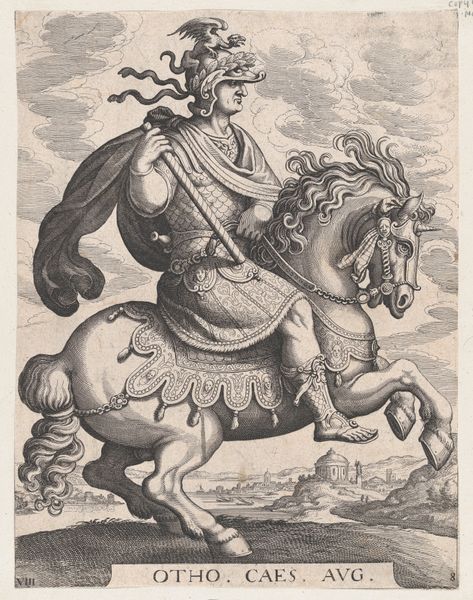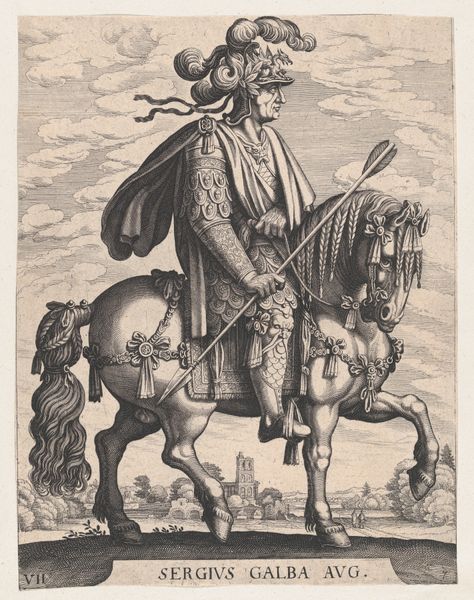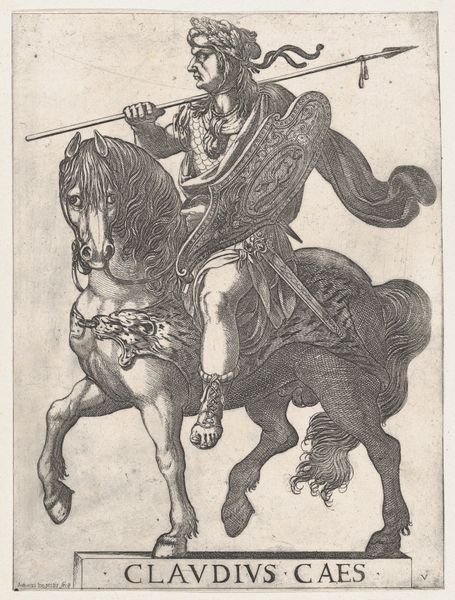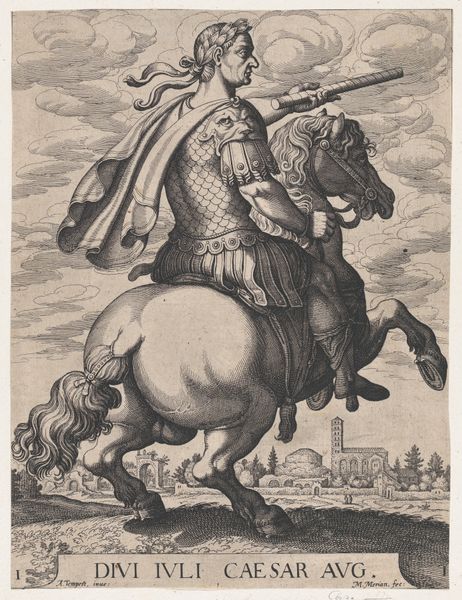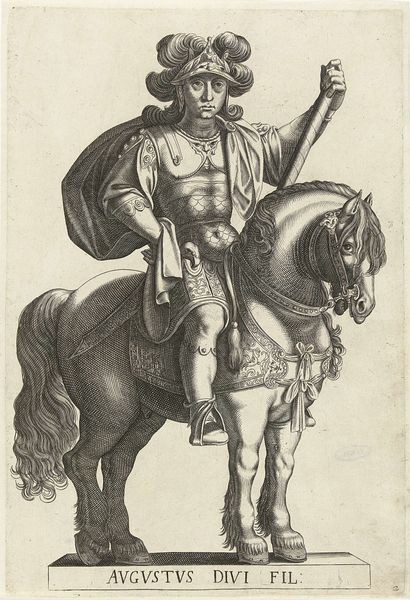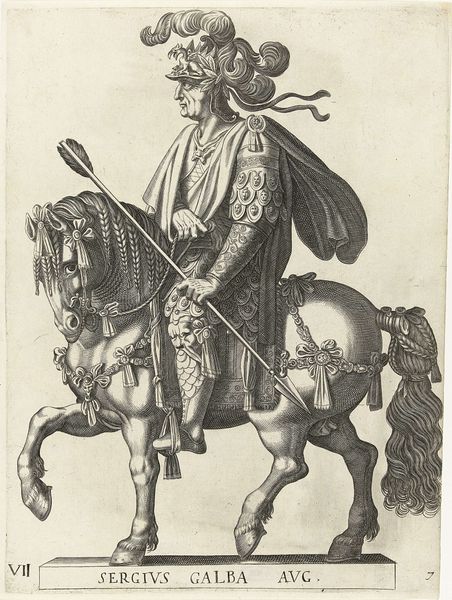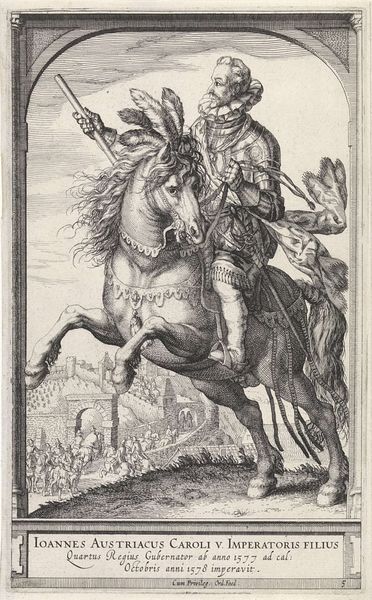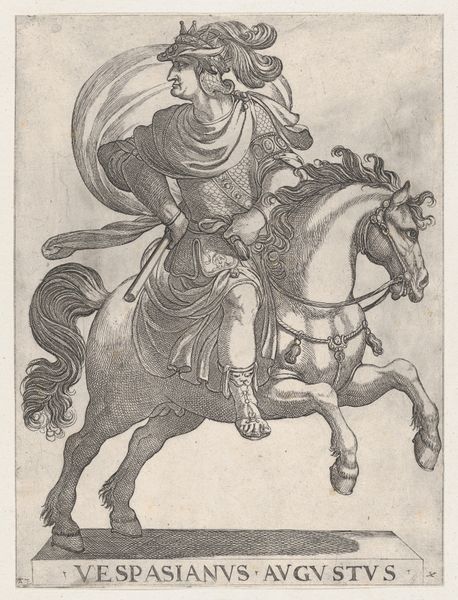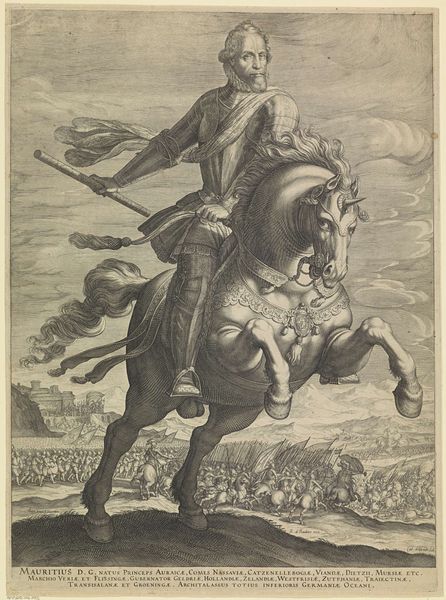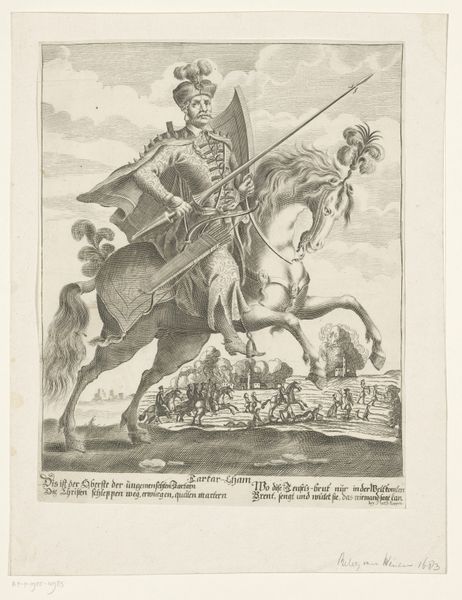
Plate 5: Emperor Claudius on Horseback, from 'The First Twelve Roman Caesars' after Tempesta 1610 - 1650
0:00
0:00
drawing, print, engraving
#
portrait
#
drawing
# print
#
landscape
#
figuration
#
romanesque
#
horse
#
history-painting
#
engraving
Dimensions: Sheet: 11 13/16 in. × 9 in. (30 × 22.8 cm)
Copyright: Public Domain
Editor: This is "Plate 5: Emperor Claudius on Horseback, from 'The First Twelve Roman Caesars' after Tempesta," made between 1610 and 1650 by Matthäus Merian the Elder. It's an engraving. It seems to me like a very idealized representation of power. What stands out to you? Curator: It's the means of production itself that captivates me. This isn’t a spontaneous sketch; it’s an engraving, a print. Think about the labor involved in creating the matrix, the plate. Each line, each shade, carefully etched to produce multiple copies. It’s about reproduction and dissemination of this image of power. How does the knowledge that this was intended for widespread distribution alter your initial perception of idealized power? Editor: That's interesting. I was focused on the image itself, but knowing it was mass-produced changes things. Was it common to depict emperors this way through printmaking? Curator: Exactly! Consider the market for these prints. Who was buying them, and why? These weren't unique art objects but commodities, feeding a growing interest in classical antiquity and its leaders. The material act of creating and circulating this image reinforces existing social hierarchies and perhaps creates new ones by standardizing an image of emperial prestige. Do you notice the detailed craftsmanship juxtaposed with the practical purpose of broad distribution? Editor: I do. So it's not just about glorifying Claudius, but also about the commercial aspect of creating and selling these images to a public eager to consume them? Curator: Precisely. And that consumption is directly tied to the material object – the print itself. Think of the resources required: the metal plate, the ink, the paper, the press. Each aspect has a history, a material cost that underpins this representation of power. Editor: I see now that analyzing the print’s materiality and production context adds so much to my understanding of its meaning. Curator: Indeed. By shifting our focus to these material conditions, we begin to unpack the complex social forces at play in even a seemingly straightforward image. It prompts us to rethink notions of authorship and originality in relation to dissemination of propaganda. Editor: It's really fascinating to consider how the process itself shaped the artwork's message, rather than just the final image. Thanks for sharing this perspective.
Comments
No comments
Be the first to comment and join the conversation on the ultimate creative platform.
